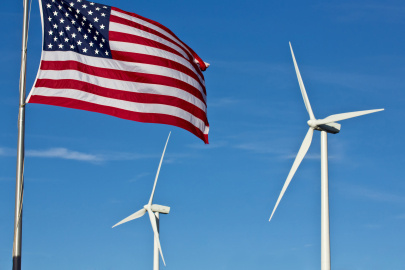-
 EERE is committed to bringing the benefits of energy innovation to every American by making the United States a global leader in renewable energy and energy efficiency technologies.
EERE is committed to bringing the benefits of energy innovation to every American by making the United States a global leader in renewable energy and energy efficiency technologies.
Energy innovations are playing a significant role in improving the lives of Americans by making them and their families healthier.
Renewable energy can offset the need for electricity generation from sources that release harmful air pollutants, such as sulfur and nitrogen oxides (SOx and NOx, respectively).
In the United States, the effects of air pollutants like these are linked to an estimated 300,000 premature deaths each year. Renewable energy is making the air and water in our communities cleaner, improving health outcomes for vulnerable groups, like children, and saving Americans up to $77 billion per year in total health costs.
Diversifying our energy mix protects the fundamental human right to a healthy, safe environment. Proximity to industrial facilities exposes Americans to more contaminants, particulate matter, and carcinogens linked to higher rates of premature death, cancer, and chronic respiratory conditions.
How Do Energy Innovations Improve Health and Safety?
As we diversify our energy mix to include renewable power Americans across the country are seeing improved health outcomes and health benefits from reduced mortality ranging from $65 billion to $250 billion in 2035 alone.
Reduced air pollution in modeled scenarios could avoid between 2,900 and 4,500 premature deaths in 2030, in addition to preventing 76,000–119,000 asthma attacks and 312,000–484,000 lost workdays. The accelerating adoption of electric vehicles (EVs) is reducing exhaust emissions of nitrous oxides and harmful fine particulates, which can cause severe respiratory diseases.
Energy efficiency measures in homes and buildings are helping ensure good air quality, healthy temperatures, and lower humidity levels. A study found that a single-family home in Atlanta, Georgia, built to high energy-efficiency standards would remain habitable for 5 times longer than a typical home during a seven-day cold event. Effective home-efficiency measures include weatherizing and retrofitting buildings by adding or replacing insulation, windows, heating and cooling systems, and major appliances, among other things. Sulfur dioxide (SO2), nitrogen oxides (NOx), and particulate matter reductions attributable to just three of EERE’s recent appliance and equipment standards will lead to nearly $45 billion in health benefits over the lifetime of the equipment. These measures can reduce the incidence and symptoms of heart and respiratory conditions, allergies, and more. They also provide physical comfort, which supports mental health and well-being. Use this checklist to improve your home’s energy efficiency.
By diversifying our energy mix today, we can moderate the health and environmental impacts of pollution and lower the cost of medical bills for a safer future for the next generation of Americans.
EERE Is Working To Improve Healthy and Safety
Health, Safety, and Environmental Impacts News
-
 EERE invests in research, development, and technology-validation to help modernize the American energy system and position the United States to lead the world in the technical fields that will soon dominate the global energy market.January 17, 2025
EERE invests in research, development, and technology-validation to help modernize the American energy system and position the United States to lead the world in the technical fields that will soon dominate the global energy market.January 17, 2025 -
 Draft framework identifies opportunities and challenges to use circularity to improve industry efficiency, secure supply chains, benefit communities, and create jobs.October 9, 2024
Draft framework identifies opportunities and challenges to use circularity to improve industry efficiency, secure supply chains, benefit communities, and create jobs.October 9, 2024

